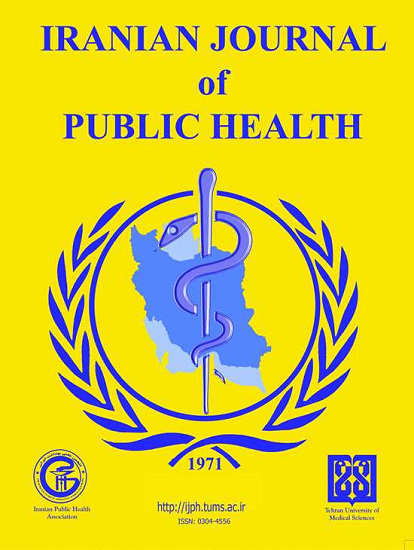Anthropometric Features of Head and Face in Iran's Multi-Ethnic Workforce: A Framework for Future Studies on Respirator Design and Sizing
Abstract
Background: Head and facial anthropometric data play a crucial role in designing and properly sizing respirators. Previous anthropometric studies on respirator design have primarily focused on the head and facial dimensions of American and Chinese individuals. However, there is a lack of research for multi-ethnic countries like Iran. We aimed to establish a comprehensive head and facial anthropometric database for Iranian workers. Specifically, we sought to identify differences among gender, age, and ethnicity, as well as determine the predictors that may influence head and facial dimensions.
Methods: This cross-sectional study was conducted among workers who underwent health assessments at Occupational Health and Medical Examination Centers affiliated with the medical universities of Shiraz, Tehran, and Karaj. A total of 1,000 workers (837 males and 163 females) participated in the study in 2022. Nineteen head and facial anthropometric dimensions were measured across six major Iranian ethnic groups. The effects of gender, age, ethnicity, occupation, and BMI on facial dimensions were analyzed using linear regression.
Results: The results revealed a difference between the head and face dimensions of males and females, which indicated that the facial dimensions of males were larger. Linear regression analysis showed gender, ethnicity, occupation, age, and BMI were significant predictors of the facial dimensions.
Conclusion: When designing and sizing respirators, it is crucial to consider the variations in facial anthropometric dimensions. By doing so, we can ensure that the respirators fit well on the face, thus minimizing the chances of injuries and occupational diseases.
2. Zhuang Z, Bradtmiller B (2005). Head-and-face anthropometric survey of US respirator users. J Occup Environ Hyg, 2 (11):567-576.
3. Lim YC, Abdul Shakor ASa, Mohamad N, et al (2022). Head and face anthropometric study for respirators in the multi-ethnic Asian population of Malaysia. Front Public Health, 10:972249.
4. Lee SA, Hwang DC, Li HY, et al (2016). Particle size-selective assessment of protection of European standard FFP respirators and surgical masks against particles-tested with human subjects. J Healthc Eng,2016:8572493.
5. Fakherpour A, Jahangiri M, Seif M (2020). Qualitative fitting characteristics of filtering face-piece respirators on Iranian people. J Environ Health Sci Eng, 18 (2):587-597.
6. Zhuang Z, Landsittel D, Benson S, Roberge R, Shaffer R (2010). Facial anthropometric differences among gender, ethnicity, and age groups. Ann Occup Hyg, 54 (4):391-402.
7. Raveendran M (2019). The South Asian facial anthropometric profile: a systematic review. J Craniomaxillofac Surg, 47 (2):263-272.
8. Lin Y-C, Chen C-P (2017). Characterization of small-to-medium head-and-face dimensions for developing respirator fit test panels and evaluating fit of filtering facepiece respirators with different faceseal design. PLoS One, 12 (11):e0188638.
9. HACK AL, Mcconville JT (1978). Respirator protection factors: Part I—Development of an anthropometric test panel. Am Ind Hyg Assoc J, 39 (12):970-975.
10. Shahshahani S (2022). Anthropology and ethnic studies, Iran. Int J Anthropol Ethnol, 6 (1):17.
11. ISO (2006). General Requirements for Stablishing Anthropometric Databases (ISO 15535). International Organization for Standardization, Geneva.
12. Mohebbi M, Mohebbi Z (2015). Demography of Race and Ethnicity in Iran. The International Handbook of the Demography of Race and Ethnicity:353-366.
13. Farkas LG, Katic MJ, Forrest CR (2005). International anthropometric study of facial morphology in various ethnic groups/races. J Craniofac Surg, 16 (4):615-646.
14. Shaw Jr RB, Katzel EB, Koltz PF, et al (2011). Aging of the facial skeleton: aesthetic implications and rejuvenation strategies. Plast Reconstr Surg, 127 (1):374-383.
15. Cotofana S, Fratila AA, Schenck TL, et al (2016). The anatomy of the aging face: a review. Facial Plast Surg, 32 (03):253-260.
| Files | ||
| Issue | Vol 54 No 5 (2025) | |
| Section | Original Article(s) | |
| DOI | https://doi.org/10.18502/ijph.v54i5.18644 | |
| Keywords | ||
| Anthropometric survey Ergonomics Respirator sizing Facial dimensions | ||
| Rights and permissions | |

|
This work is licensed under a Creative Commons Attribution-NonCommercial 4.0 International License. |





